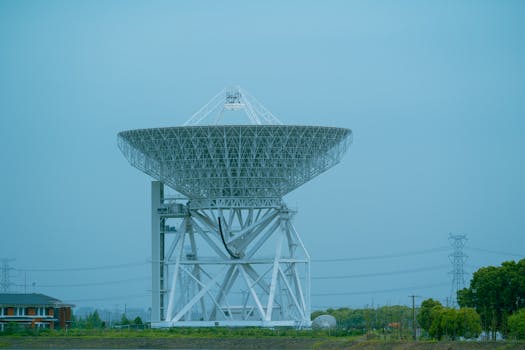The Future is Now: Exploring the Cutting-Edge Innovations in Satellite Telecommunications

The Future is Now: Exploring the Cutting-Edge Innovations in Satellite Telecommunications
Satellite Telecommunications is one of the fastest-growing industries, with advancements in technology transforming the way we communicate. The future of satellite telecommunications is now, with cutting-edge innovations revolutionizing the industry. From advanced satellite constellations to innovative antenna technologies, the possibilities are endless. In this article, we will delve into the latest developments in satellite telecommunications, exploring the technologies that are shaping the future of the industry.
Satellite telecommunications has come a long way since its inception. With the launch of the first commercial communications satellite, Intelsat 1, in 1965, the industry has grown exponentially. Today, satellite telecommunications plays a vital role in global communications, providing connectivity to remote and underserved areas. The industry has witnessed significant advancements in recent years, with the development of new technologies and innovations. One of the most significant advancements is the launch of advanced satellite constellations, such as OneWeb and Starlink.
Advanced Satellite Constellations
Advanced satellite constellations are a network of satellites that work together to provide global coverage. These constellations are designed to provide high-speed, low-latency connectivity, making them ideal for a wide range of applications, including broadband internet, mobile networks, and IoT devices. OneWeb and Starlink are two of the most notable examples of advanced satellite constellations. OneWeb, a UK-based company, is launching a constellation of 648 satellites to provide global broadband coverage. Starlink, on the other hand, is a constellation of thousands of satellites being launched by SpaceX, with the goal of providing high-speed internet connectivity to the entire world.
These advanced satellite constellations are made possible by advancements in technology, including the development of smaller, more efficient satellites, and innovative launch systems. The use of electric propulsion systems, for example, has reduced the size and weight of satellites, making them more cost-effective to launch. Additionally, the development of reusable launch vehicles, such as the SpaceX Falcon 9, has significantly reduced the cost of launching satellites into orbit.
Innovative Antenna Technologies
Innovative antenna technologies are another area of significant development in satellite telecommunications. Traditional satellite antennas are large and cumbersome, requiring a clear line of sight to the satellite. However, new antenna technologies, such as phased array antennas and flat panel antennas, are changing the game. These antennas are smaller, more efficient, and can be mounted on moving vehicles, making them ideal for a wide range of applications, including maritime, aviation, and land mobile communications.
Phased array antennas, for example, use a large number of small antennas to steer the beam electronically, allowing for faster and more accurate tracking of satellites. Flat panel antennas, on the other hand, use a flat, compact design to provide high-gain, low-profile connectivity. These antennas are ideal for use on vehicles, such as cars, trucks, and buses, providing high-speed connectivity on the move.
Quantum Communications and Cybersecurity
Quantum communications and cybersecurity are also areas of significant development in satellite telecommunications. As the industry continues to grow, the need for secure and reliable communications is becoming increasingly important. Quantum communications uses the principles of quantum mechanics to encode and decode messages, providing unbreakable encryption. This technology has the potential to revolutionize the way we communicate, providing secure and reliable connectivity for sensitive applications, such as financial transactions and military communications.
Cybersecurity is also a major concern in satellite telecommunications, as the industry is vulnerable to cyber threats. The use of advanced encryption technologies, such as quantum cryptography, can provide an additional layer of security, protecting sensitive data from interception and eavesdropping. Additionally, the development of advanced threat detection systems can help to identify and mitigate cyber threats, providing a more secure and reliable communications network.
In conclusion, the future of satellite telecommunications is now, with cutting-edge innovations revolutionizing the industry. From advanced satellite constellations to innovative antenna technologies, quantum communications, and cybersecurity, the possibilities are endless. As the industry continues to grow and evolve, we can expect to see even more exciting developments, transforming the way we communicate and connect with each other.



